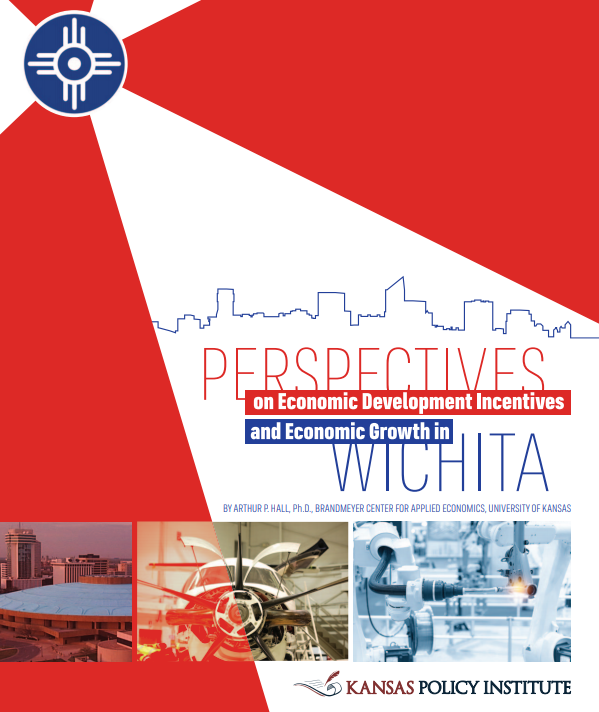Few regional economies become as specialized as the Wichita economy became – and remains. A confluence of events at the dawn of aviation made Wichita the “Air Capital of the World.” A second confluence of events – primarily the demand for aircraft to fight World War II – meta-sized that identity, creating an economic boom that increased Wichita’s population by 140 percent from 1940 to 1960. Aircraft manufacturing – and all of its support systems – have defined the foundational dynamics of Wichita’s economic ecosystem for close to a century.
The economic dynamics of specialization tend to be self-reinforcing. Wichita has birthed many successful businesses that have diversified the regional economy,but the natural flow of commerce has reinforced Wichita’s primary economic identity as a specialized, manufacturing town. Such specialization comes with upsides and downsides. The upsides relate to high levels of productivity and high wages. The downside relates to volatility – volatility related to the cyclical aspects of specialized manufacturing and the volatility of a changing world in which manufacturing-related supply chains have globalized. Despite these downsides, many regional economies in the U.S. have both a higher concentration of manufacturing activity than Wichita and a higher rate of economic growth.
Wichitans have for a long time understood the upsides and downsides of a manufacturing concentration. This understanding has motivated frequent discussions related to the strategic goal of promoting a more diversified level of economic activity. The economic development challenge attached to this goal has two components. First, diversification, per se, may do nothing to enhance Wichita’s prospects for faster economic growth. Second, “diversification” of the regional economy is not something that the community can just decide to do: economic development is an organic process driven by trial-and-error.
Understanding economic development as an organic process driven by trial-and-error, rather than a mechanistic process driven by strategic planning and engineering, offers a crucial perspective for concerned citizens seeking to enhance Wichita’s economic future through civic minded endeavors like Project Wichita. The primary driver of regional economic growth relates to the formation of new businesses (or activation of existing businesses) that grow quickly because they have discovered – by luck or design – a market with under-served demand. Almost by definition such businesses emerge from a dynamic market process of trial-and-error because they would be abundant if people already knew how to create them. This fact explains why government-subsidization of specific enterprises or groups of people through targeted economic development rarely produces net-new economic growth. What may look like economic growth on the surface ends up being, upon closer scrutiny, an expensive exercise in the rearrangement of existing business activity.
The dynamic economic processes of trial and error are clearly at work in Wichita. The Wichita economy continues to grow, even if Wichitans would like it to grow faster. Hundreds of businesses start and expand every year, and thousands of people relocate into Wichita every year. However, as an inherent part of the dynamic process, hundreds of businesses dissolve and contract every year, and thousands of people relocate out of Wichita every year. Yet, on net, overall business activity grows and so does the population.
Wichita could birth new, fast-growing businesses (or spark existing, fast-expanding businesses) that might provide a step change in the rate of regional economic growth. However, the probability of that event is conditioned on luck and broad economic trends. In the U.S., economic activity is naturally flowing towards metropolitan areas with larger populations. City size itself seems to have become a causal factor. More populace regional economies support a greater volume of commercial experimentation, which increases the chance of generating fast growing businesses. Unfortunately, despite the mid-20th Century population boom, Wichita has always been a relatively small, geographically isolated metro area. Perhaps the flow of commerce in a post-pandemic world, in which more manufacturing capability takes place on U.S. soil will create a counter-veiling trend that will mitigate Wichita’s size disadvantage and activate its manufacturing advantage.
Taken together, the various perspectives presented in this report should encourage a data-driven understanding of Wichita’s economic history and economic growth potential. All cities face their own version of economic development challenges. Wichita is growing and will likely continue to grow. The community – elected leaders, businesses, and individual citizens – should embrace these challenges with a clear understanding of how economies grow. Policies that improve the odds of creating “gazelles” offer a better use of community resources when compared with the use of economic development incentives targeted to specific companies or groups of people. By way of analogy, this policy perspective suggests that the proper role of government in the economic development process is to run tournaments not field players.
Wichita Incentive-Economic Perspectives – KPI Paper




